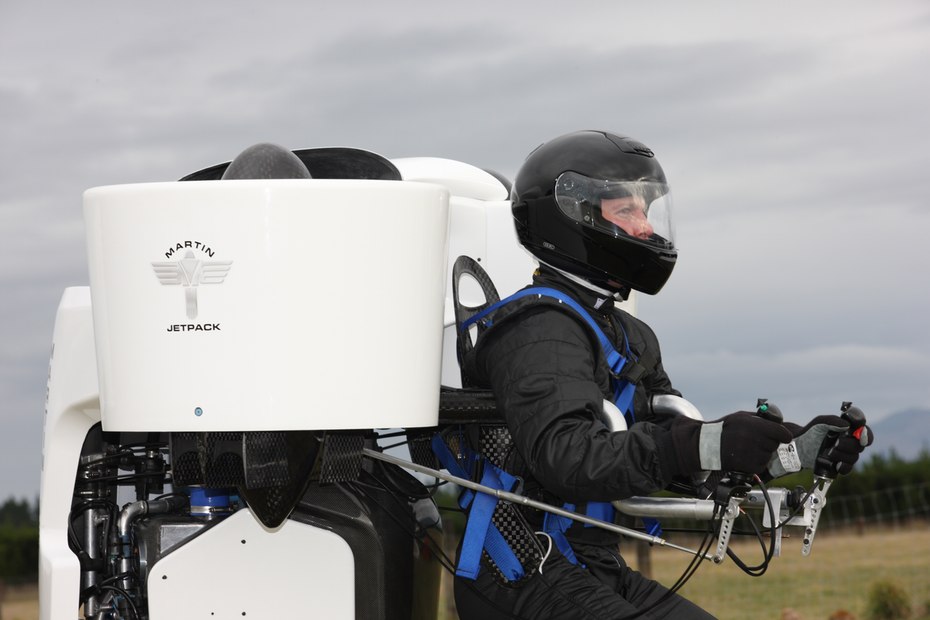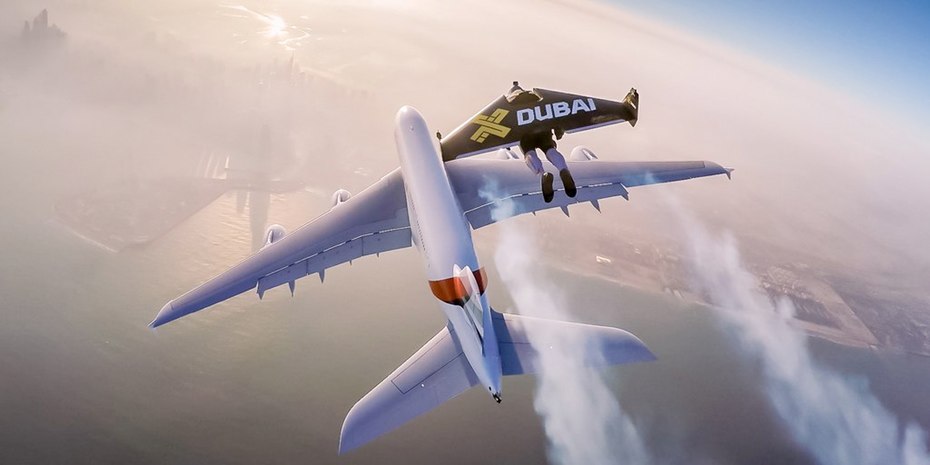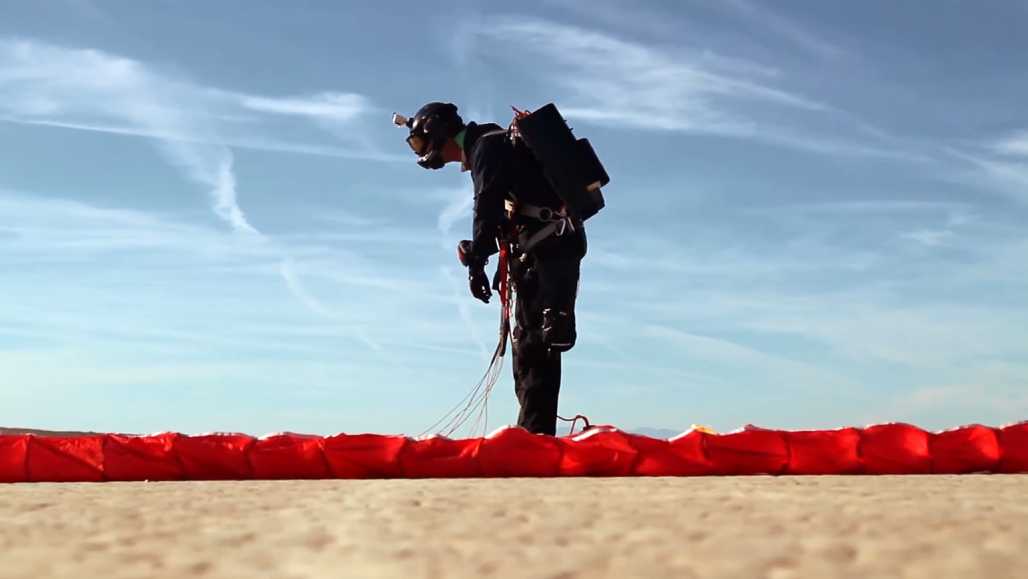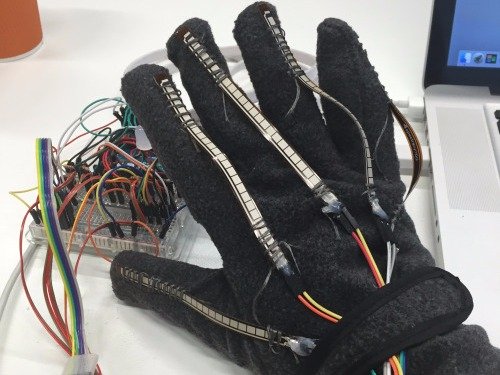World’s only Jetpack (JB-9) flies around Statue of Liberty
The concept of personal flight achieved a new milestone a few days ago. David Mayman, an inventor and pilot, took a flight in his powerful JB-9 jetpack in the airspace of New York. Ending the spectacular debut flight by circling around the great Statue of Liberty, the aviator paused and saluted the Statue before final landing.
JB-9 is a relatively compact, agile and powerful jet powered backpack. It works on vector technology to control the engines for steering and direction. The fuel used in the jetpack is simple kerosene oil. The total flight time is about 10 minutes, depending mostly on the weight of the pilot.
Following video demonstrates the glory moments of David Mayman in JB-9:
Inside JB-9 technology
The JB-9 is a backpack which uses a carbon-fiber corset to strap the jetpack to the pilot. Most of the body of backpack is fuel compartment. It has a fuel capacity of 10 gallons, using roughly one gallon per minute during flight. The fuel used is Kerosene oil, which is relatively cheaper and easily available from local service stations.

Both sides of the jetpack have turbojet engines that provide the thrust force. The exhaust gasses from the engines are mixed with ambient air to reduce their temperature. The resulting gases have a warm temperature but not burning hot.
The maneuverability is provided by the vector control of the engines using push/pull cables connected to the handles. The maximum vertical thrust of this jetpack is up to 10,000 feet per minute.
The weight of the jetpack is bearable and it can fit into the back of a car easily.
“With no fuel in it, I’ve jogged about a kilometer with it strapped to my back. Even full of fuel I’ve jogged a few hundred meters. There’s a large suitcase that our whole JB-9 will fit into. It’ll fit in the back of a car. The little handles fold up but that’s about it.” – David Mayman
About the inventor
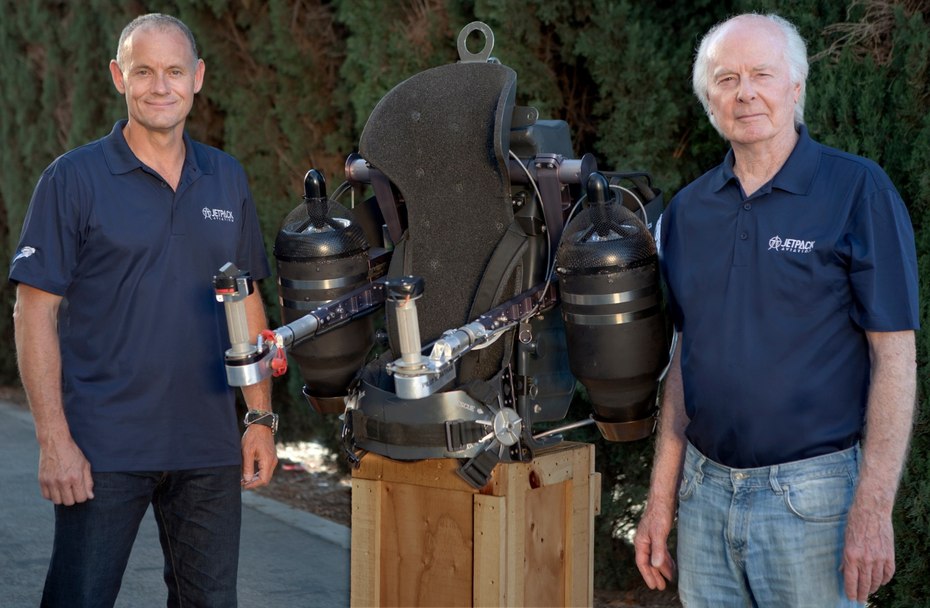
David Mayman is an Australian businessperson who has been engaged in business world for most of his life. However, this seasoned executive has other hobbies too.
“I’ve spent my life in software and mining and fairly sensible occupations. But my overriding passion has been to build a jetpack, since I was very young.” – David Mayman
Jetpack Aviation is the platform that Mayman has been using to develop personal flight jetpack. He has been working on this technology for more than a decade. Finally, he has succeeded in his quest.
The inventor has been flying the prototype for quite some time, off the public radar. After being sure about the technology, he took off on a public flight.
“It was time to bring it out of the closet, so to speak.” – David Mayman
Nelson Tyler is the engineer responsible for turning the passion of Mayman into a reality. He has prior experience of designing jetpacks as he has worked on Rocketbelt Flight Project at 1984 Olympics. He is as fixated on developing commercial and user-friendly jetpacks as Mayman.
“Nelson Tyler and I got together 10 years ago. He is an extraordinary engineer and inventor based in Hollywood. And that’s really what’s made it possible.” – David Mayman
This innovation by Jetpack Aviation is the fruit of a highly passionate jetpack developing team. And ofcourse, the team is being led by Nelson Tyler.
A glimpse of the past
People have been trying to develop personal flight equipment for more than 100 years. Each one of them had their own specs and pros/cons. Some were big and bulky; others lacked the time endurance. Let us revise a few of them:
- Bell Rocket Belt
The hopes went up when the Bell Rocket Belt took its debut flight in 1960s. Built by Bell Aerosystems, the jetpack was a rocket propulsion device capable of small distance leaps.
Superheated water vapors provided propulsion. They were created by reaction of nitrogen gas and hydrogen peroxide. Unfortunately, the project got dull because the fuel is pricey. Moreover, the fuel burns so fast that the total flight time is about half a minute.
- Martin Jetpack
A more recent addition in the family of jetpacks is The Martin. Credited to the Martin Aircraft in New Zealand, this jetpack is the safest of all jetpacks built yet. That is because it is made from carbon-fiber composite material. It has a redundant system to take over in emergency. It also deploys a ballistic parachute in case of crash landing and carries an impact absorbing carriage. The flight endurance time of the jetpack is over 30 minutes, which is quite something. However, the bulky size of the jetpack is a matter of concern.
- Jetman
Then we have the Jetman being center of the media gossips these days. Flying alongside an Airbus A380, daredevil Yves Rossy showed some badass stunts. Attaining a speed of more than 300 km/h, this chunk of metal has a flight endurance of about 10 minutes. The setback in this technology is that it needs to be launched from an airplane at enough speed.
- Parafoil Jetpack
Troy Hartman attempted to develop a homemade jetpack with two turbojet engines in 2008. He ended up with a parafoil powered by the use of jetpack. It requires strong air to lift the parafoil and a run to take off. The inventor is still working on the technology for improvements.
None of the previous technologies was as to the point of being a real jetpack as JB-9. This is a real advancement and achievement in the field of personal flight devices. This spectacular flight opened new doors to the future jetpack technologies and innovations.



